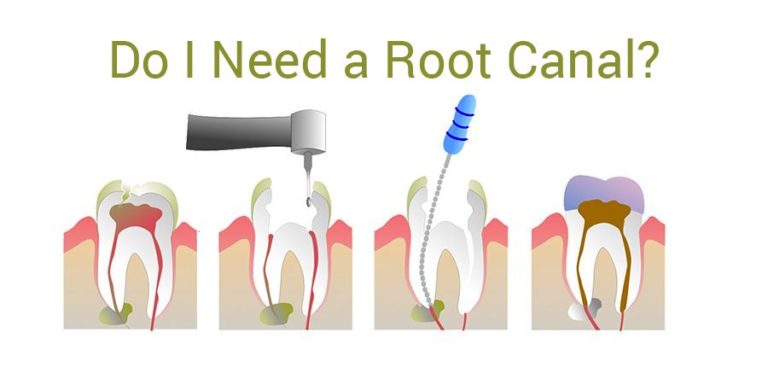Root canals are a common procedure to treat decay or infection in the tooth pulp, and it is the preferred treatment to save teeth that would have otherwise been lost. While there is no single age requirement for a root canal, individuals are more likely to need one in their thirties and forties.
Maintaining good oral hygiene and a balanced diet is essential for overall oral health.

Significance Of Root Canals
Root canals are a common dental procedure, often needed in one’s thirties and forties. This treatment is essential to treat tooth decay or infection and prevent further dental issues. With proper oral hygiene and diet, one can minimize the need for this procedure.
Prevalence Of Root Canal Treatment Worldwide
Root canal treatment is a common dental procedure that is performed worldwide to address dental pain and infections. It is estimated that millions of people undergo root canal treatment each year, highlighting its prevalence and significance in modern dentistry.
The procedure involves removing the infected or damaged pulp from the tooth and filling it with a biocompatible material to restore its function and alleviate pain. Root canal treatment has become a go-to solution for preserving natural teeth that would have otherwise been extracted in the past. This widespread practice reflects the effectiveness and success rates of root canal treatment in saving teeth and improving oral health.
Age Range For Root Canal Treatment
When it comes to root canal treatment, there is no specific age range. However, statistically, individuals in their thirties and forties are more likely to require a root canal. This age group often experiences dental issues such as tooth decay or infection that may necessitate root canal therapy. Nevertheless, it’s important to note that dental problems can occur at any age, and the need for a root canal can vary from person to person. Maintaining good oral hygiene practices and following a balanced diet can greatly reduce the risk of dental issues and the need for root canal treatment.
Regular dental check-ups can also help detect early signs of dental problems and prevent them from escalating to the point of requiring a root canal. In conclusion, root canal treatment is a prevalent and important dental procedure worldwide. It offers a solution for saving teeth that would have otherwise been extracted due to decay or infection. While the age range for root canal treatment may vary, individuals in their thirties and forties are more likely to require this procedure. However, practicing good oral hygiene and maintaining a healthy lifestyle can help minimize the risk of dental problems and the need for root canal treatment.
Understanding Root Canal Procedures
Root canal procedures are very common and can be needed at any age. They are a standard treatment for tooth decay or infection and can help save a damaged tooth. Maintaining good oral hygiene and a healthy diet can help prevent the need for a root canal.
Procedure Overview
A root canal is a dental procedure that is commonly performed to treat tooth decay or infection in the tooth pulp. The pulp is the soft tissue within the tooth that houses nerves, blood vessels, and connective tissue. During a root canal procedure, the dentist removes the infected or damaged pulp, cleans the inside of the tooth, and then seals it to prevent further infection. This procedure is typically performed by a dentist or an endodontist, a dentist who specializes in treating the tooth pulp and root canal procedures. Root canals are usually done under local anesthesia to ensure the patient’s comfort during the procedure.
Preparation And Recovery Process
Before the root canal procedure, the dentist will conduct a thorough examination of the tooth, including taking X-rays to assess the extent of the damage or infection. Once the dentist determines that a root canal is necessary, they will numb the area around the tooth with a local anesthetic. This helps to minimize any discomfort during the procedure. During the root canal procedure, the dentist will create a small opening in the tooth to access the pulp chamber and canals.
They will then remove the infected or damaged pulp using specialized dental instruments. Once the pulp is removed, the dentist will clean the inside of the tooth and shape the canals to prepare them for filling. After the canals are cleaned and shaped, the dentist will fill them with a special material called gutta-percha and seal the tooth to prevent any further infection. In some cases, a temporary filling may be placed until a permanent restoration, such as a dental crown, can be placed on the tooth.
Following the root canal procedure, it is normal to experience some mild discomfort or sensitivity in the treated tooth. This may normally be treated with over-the-counter pain relievers. It is important to continue practicing good oral hygiene, including brushing and flossing regularly, to maintain the health of the treated tooth. In conclusion, understanding root canal procedures is essential for anyone who may be facing this common dental treatment. By knowing what to expect during the procedure and how to prepare and recover properly, patients can feel more at ease and confident in their dental care.
Common Queries About Root Canals
Root canals are a common procedure to treat tooth decay or infection. Although there is no specific age requirement, they are more likely to be needed in your thirties and forties. Maintaining good oral hygiene and a balanced diet can help prevent the need for root canals.
Necessity Of Root Canals
Root canals are a common dental procedure used to treat tooth decay or infection in the tooth pulp. They are necessary when the tooth becomes severely damaged or inflamed, causing intense pain and the risk of infection spreading to other teeth. Without root canal treatment, the only alternative would be tooth extraction, which can lead to further oral health issues and the need for tooth replacement options such as implants or bridges.
Pain And Recovery After Root Canals
While the idea of a root canal may sound intimidating, the procedure itself is relatively painless, thanks to modern anesthesia techniques. However, it is normal to experience some discomfort and sensitivity after the procedure, which can be managed with over-the-counter pain relievers. The recovery period typically lasts a few days, during which you should avoid chewing on the treated tooth and follow good oral hygiene practices, such as gentle brushing and flossing. Your dentist will provide specific instructions on post-treatment care to ensure a smooth and successful recovery.
In conclusion, root canals are a necessary and common dental procedure for treating severe tooth decay or infection. They allow for the preservation of natural teeth and prevent further oral health complications. While the idea of a root canal may sound daunting, the procedure itself is relatively painless, and the recovery period is manageable with proper care. If you are experiencing tooth pain or suspect the need for a root canal, it is best to consult with a dentist who can assess your situation and provide appropriate treatment.

Credit: brightsmilepowell.com
Factors Influencing Root Canal Prevalence
Factors influencing the prevalence of root canals are diverse, but age is an important factor. Although there is no specific age requirement for root canal treatment, individuals in their thirties and forties are more likely to need this procedure. Maintaining good oral hygiene and eating a well-balanced diet can help in preventing the need for a root canal.
Root canals are a common dental treatment, but have you ever wondered what factors contribute to their prevalence? Understanding these factors can help shed light on why some people may require root canals more often than others. Let’s take a closer look.
Teeth Most Commonly Requiring Root Canals
Not all teeth are created equal when it comes to root canals. Certain teeth are more prone to dental issues that necessitate root canal treatment. The most commonly affected teeth include:
- Molars: These back teeth, with their multiple roots and deep grooves, are particularly susceptible to decay and infection.
- Premolars: These teeth, located between the molars and the front teeth, also have multiple roots and are prone to decay and infection.
- Front teeth: While less common, front teeth can also require root canal treatment if they become severely damaged or infected.
It’s important to note that individual dental health and hygiene practices can greatly influence the likelihood of needing a root canal. Regular brushing, flossing, and dental check-ups can go a long way in preventing dental issues that may lead to root canal treatment.
Age Demographics For Root Canal Treatment
While there is no specific age requirement for root canal treatment, certain age demographics are more prone to requiring this dental procedure. In general, individuals in their thirties and forties are more likely to need a root canal. This age group often experiences a buildup of dental issues over time, such as decay, infections, and previous dental work that may require root canal treatment.
However, it’s important to note that anyone can require a root canal at any age, as dental issues can occur at any time. Maintaining optimal oral health through daily oral hygiene routines and a well-balanced diet can help minimize the risk of requiring a root canal.
In conclusion, while root canals are a common dental treatment, certain factors can influence their prevalence. Understanding which teeth are more prone to dental issues and the age demographics most likely to require root canal treatment can help individuals take proactive measures to prevent the need for this procedure.
Tips For Oral Health And Root Canal Prevention
Root canals are a standard dental procedure, with millions being performed annually to relieve pain and save teeth from extraction. However, maintaining good oral health can help prevent the need for root canals. Here are some essential tips to support oral health and minimize the risk of root canals.
Preparing For A Root Canal
To prepare for a root canal, it is crucial to maintain a consistent oral hygiene routine. This includes regular brushing with fluoride toothpaste, flossing, and using an antiseptic mouthwash to keep the teeth and gums healthy. Additionally, scheduling regular dental check-ups and cleanings can help detect any potential issues early, preventing the progression of dental problems that may lead to root canal therapy.
Symptoms And Avoidance Of Root Canals
Avoiding the need for a root canal starts with recognizing the symptoms of dental issues that may lead to this treatment. Symptoms such as persistent toothache, sensitivity to hot or cold, swelling in the gums, and persistent bad breath should not be overlooked. Addressing these symptoms promptly through professional dental care can potentially prevent the progression of dental decay or infection, reducing the likelihood of needing a root canal.

Credit: theperfectsmilekc.com

Credit: mywilliamsburgdentist.com
Frequently Asked Questions For How Common Are Root Canals
What Percentage Of People Get Root Canals?
Approximately 15-20% of people undergo root canal treatments. It is a common procedure to treat tooth decay or infection and save the natural tooth.
At What Age Are Root Canals Common?
Root canals are more common in your thirties and forties, but there is no specific age requirement for the procedure.
Is It Common To Need A Root Canal?
Root canals are a standard dental procedure to treat decay or infection in the tooth pulp. It is a common treatment to save teeth and relieve pain.
Are Root Canals A Big Deal?
Root canals are not a big deal and are a common procedure to treat damaged or infected teeth. Millions of teeth are saved each year through root canal treatment, relieving pain and restoring oral health.
Conclusion
Root canals are a common dental procedure used to treat decay or infection in the tooth pulp. They are performed to alleviate pain and save the tooth from extraction. While there is no specific age requirement for root canals, they are more commonly needed in the thirties and forties.
Maintaining good oral hygiene and a healthy diet can help prevent the need for root canals. If recommended by your dentist, there is no need to worry as root canals are a routine and effective treatment option.

I am a dentist and also blog regularly. my target audience is America Europe & providing regular information for them.
